Start with the problem on the left side and follow the tree to the right. It may direct you to another number on the left of the chart to continue the process.
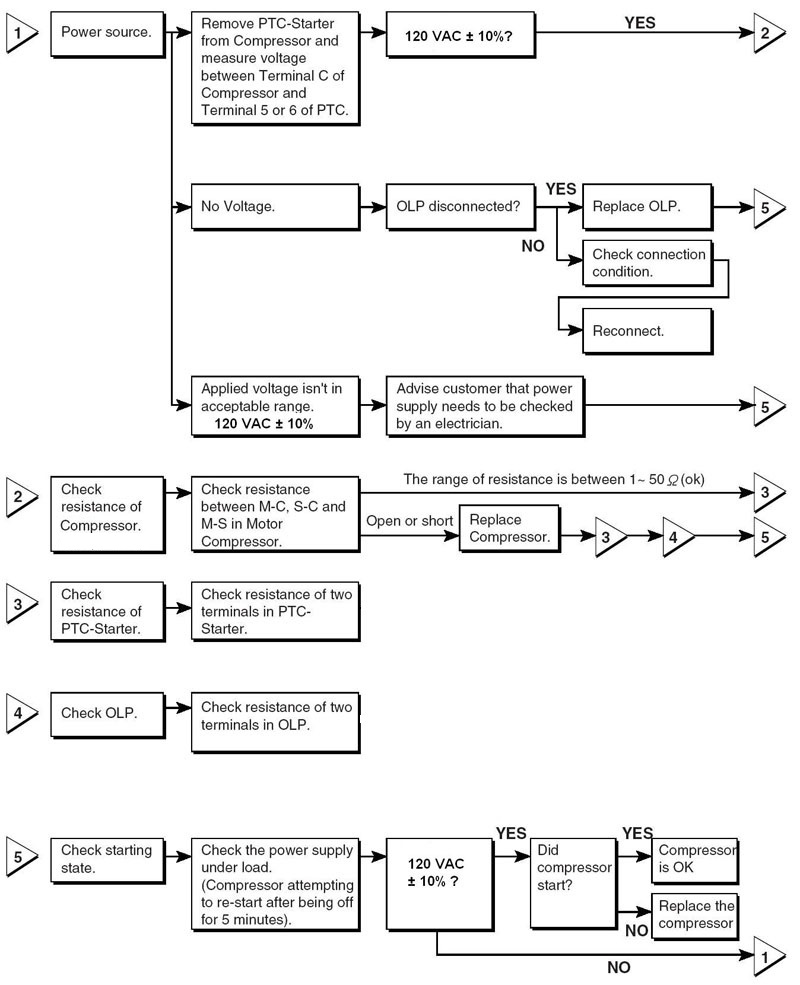
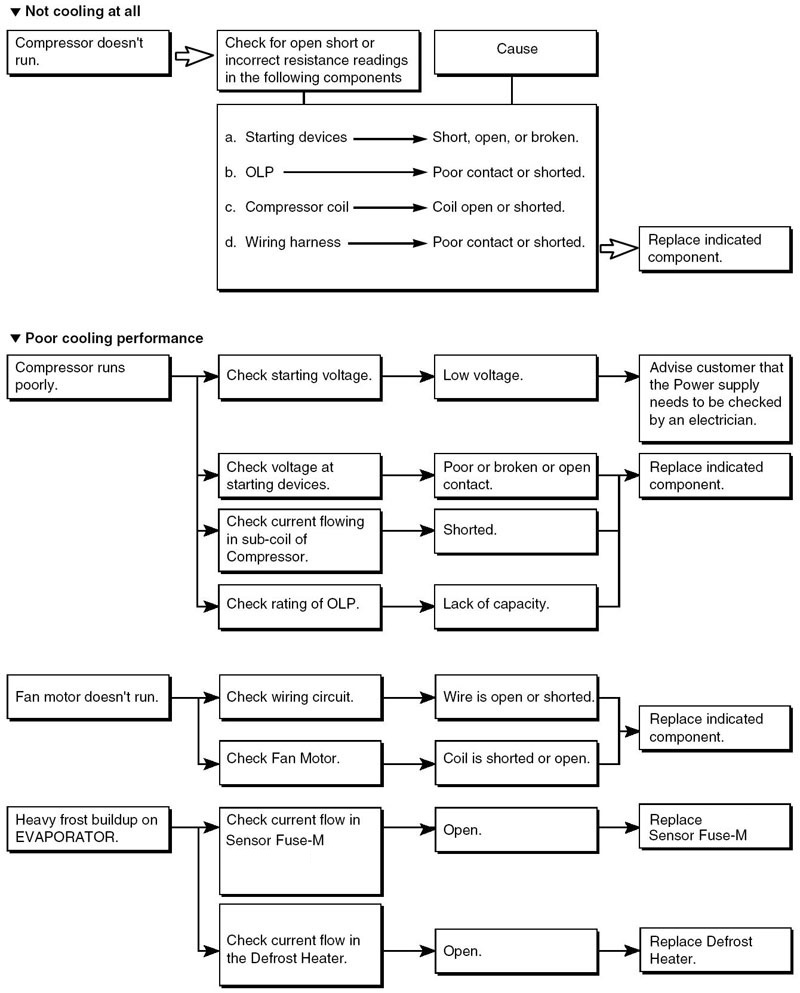


If the icemaker fails to produce ice, produces it very slowly, or if the ice tends to melt when it has been produced, check the temperature in the freezer and in the icemaker compartment. It should be close to 0� F (-18� C.) Check the fans in the freezer; one for the freezer and one for the icemaker compartment. If the icemaker compartment does not receive a sufficient flow of cold air, the water will not freeze or the ice may melt. If the fans are running but the freezer compartment is not cold enough, check the sealed system for a refrigerant leak. In this case, the refrigerator may not be as cold as it should be, also. Finally, check the sensors, starting with the one in the freezer and in the icemaker compartment for the correct resistances (see the chart, below.)
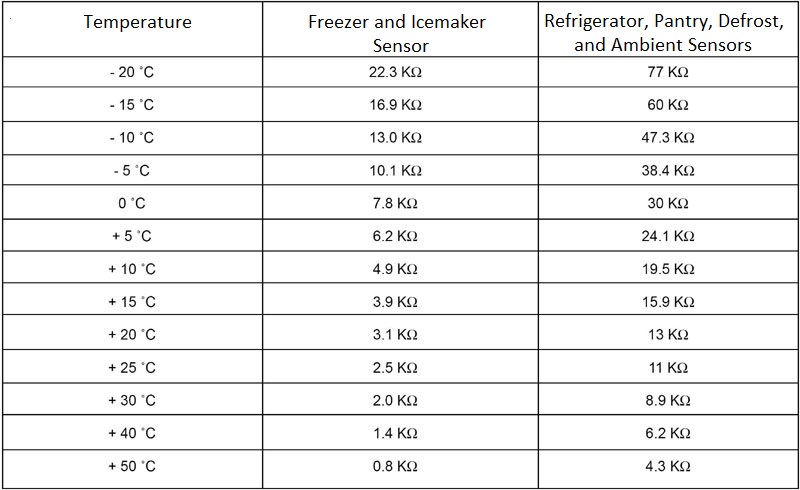
See below for more information on this topic.
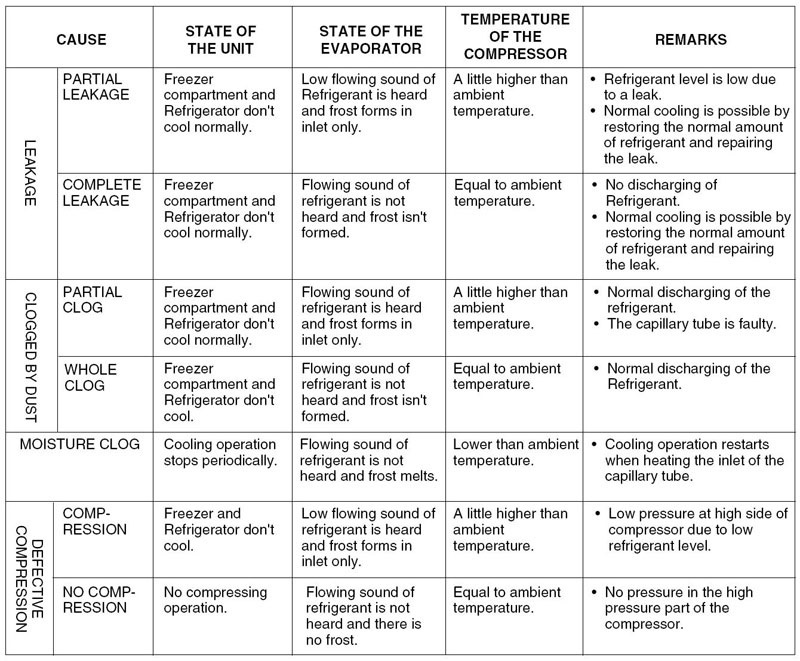
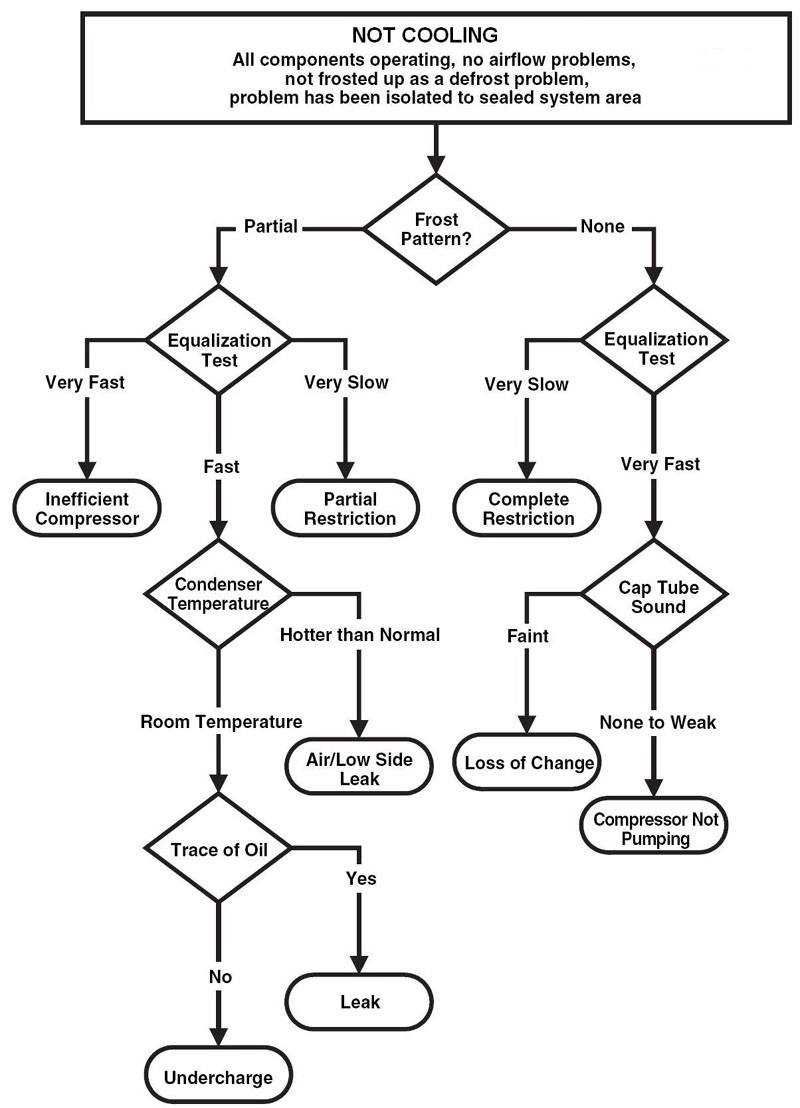
If the complaint is NO ICE or NOT ENOUGH ICE or ICE MELTING, check the temperature settings first. The default settings are 37� F (0� C) in the refrigerator section and 0� F (-18� C) in the freezer.
Check the temperature in the icemaker compartment. It should be 0� F (-18� C.)
(Notice the technician is using an infrared thermometer in the pictures.)

Check the temperature in the freezer compartment. It should be 0� F (-18� C.)
Check the resistance of the sensors to ensure one of them is not malfunctioning.
If a sensor has failed, replace it before proceeding.
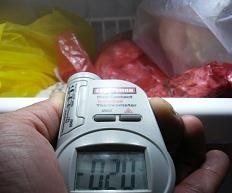
Check the temperature of the condenser unit. If it is cooler than 86� F (30� C) at an ambient temperature of 70� F (21� C) there is likely a low level of refrigerant caused by a leak in the sealed system.
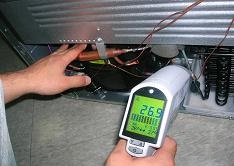
Check the dryer�s auxiliary fill pipe for signs of oil or refrigerant leakage.

If there is evidence of a leak, replace the dryer. Then evacuate and recharge the system. The system should run to specification now.
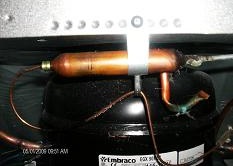
While replacing the dryer and repairing the system, check all the solder joints and usual places for leaks.

Questions? Comments! Concerns? Report an error?
Let us know!
An e-mail should solve the problem.